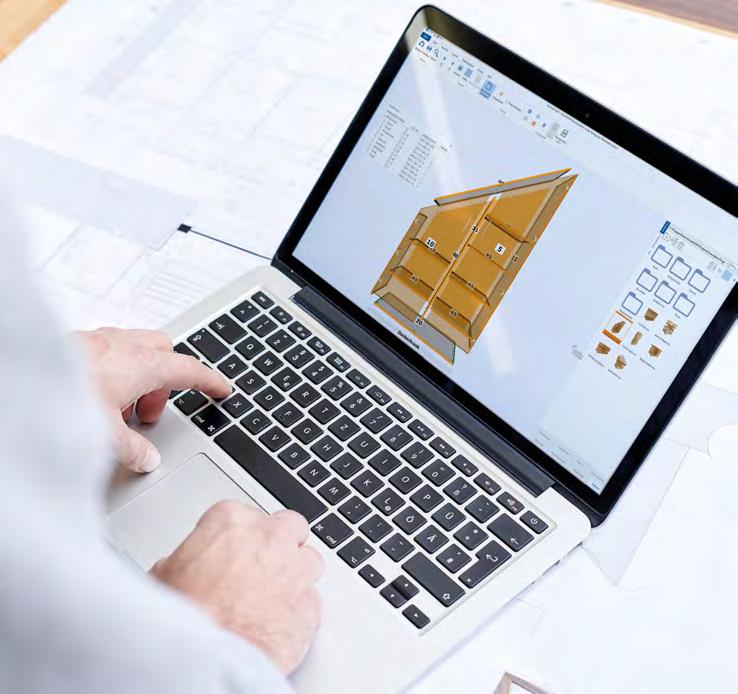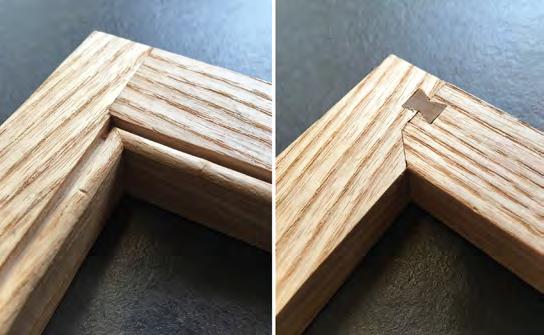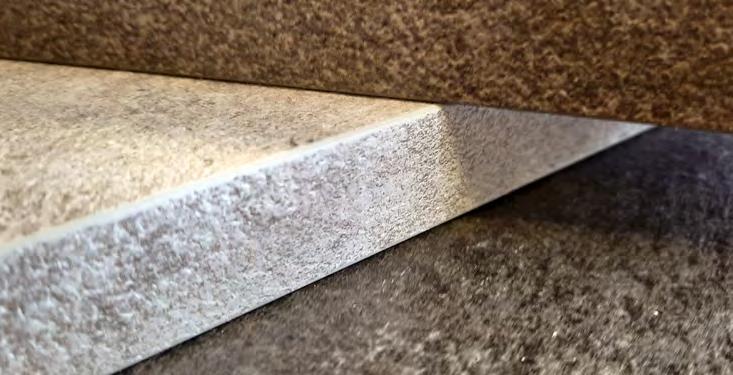
4 minute read
The next generation
When it created a vertically positioned twinspindle tool and cutter grinding machine concept back in 2014, Vollmer broke all the realms of convention with its VGrind. The reward for this bold and ingenious design was an extremely successful machine that after almost eight years of evolution, has become one of the industry’s best-selling machine tools.
Vollmer used the GrindingHub exhibition in Stuttgart as the platform to launch the new VGrind neon and argon packages, as well as the VGrind 260 machine, we hear from Andreas Weidenauer, the business development manager for tool grinding at Vollmer to find out more –particularly concerning the VGrind 260.

Like every machine tool manufacturer, Vollmer acknowledges that creating a continuous feedback loop with customers is essential for continued success. To expand market penetration of the VGrind, Vollmer’s industry feedback has led to the arrival of the neon, argon and VGrind 260 machines – solutions for cost-conscious machine shops with somewhat limited automation requirements.
“Looking at the three new machines,” Andreas says, “they are three packages. The VGrind concept has remained the same since 2014, but we have evolved the product with the introduction of things like different drives, different spindles, more power and different loading systems.
“The VGrind 260 incorporates ball-screw drives whereas the existing VGrind 340S and
360S variants are linear drive machines, this lowers the cost barrier for small businesses and makes the technology more accessible for a diverse audience. We have to look at the VGrind 260 machine as a package. It was created as the foundation base for the neon and argon variants. The VGrind 260 is the configurable base model that can be tailored to meet the exact needs of the end-user whereas the neon and argon machines have restrictions on the available options.
“The limitations on factors like automation and grinding wheel changer in the neon and argon machines are reflected in their market entry point. What the VGrind 260 model allows customers to do, is review the various packages available and create a machine that suits both their needs and budget.
“If the customer has any requirements that do not fit within the parameters of the argon or neon packages, then we can offer the VGrind 260 which is the third of the new machines. This machine can be configured open and freely to the customers’ requirements. With this machine, you get everything with regard to flexibility. You can have an external or internal tool loader, the eight-station wheel changer, steady rest and everything else - you can configure every conceivable option that we have.”
Like any VGrind machine, the new 260 incorporates the two vertical spindles that pivot on the C-axis, the unfathomable Vollmer IoT gateway that gives customers entry to the world of Industry 4.0, the NUMROTOplus software with 3D tool simulation and of course, the polymer concrete foundation and proven kinematics that gives the VGrind series its industry-leading performance.
Customers can also select grinding spindles with direct- or belt-drives, wheel measuring probes for wear control, gripper compensation units for safe and precise loading and unloading, a sticking unit for opening the abrasive coating on grinding wheels, automated changing of the intermediate sleeves with a bayonet, a fully adjustable steady rest with automatic stroke and much more.
Essentially, the VGrind 260 provides every possible option for grinding tools with a maximum length and diameter up to 360mm and 200mm respectively.
0115 9491040 admin-uk@vollmer-group.com www.vollmer-group.com
Spearheading Sustainability In Furniture Production
Current market conditions—such as global inflation, supply chain shortages, and fuel price hikes—may make it difficult for furniture manufacturers to believe that profitability and corporate social responsibility can go together. However, the right technology makes it possible. Lectra’s furniture-specific design and cutting room solutions help upholstered furniture companies reduce material waste, energy consumption and associated environmental impacts at all production stages without impacting their margins.
Minimize material consumption and waste
With DesignConcept 3D and Gerber AccuMark, designers can simultaneously create virtual models, evaluate feasibility constraints, calculate preliminary manufacturing costs and share this key decision-making information with stakeholders before producing the first physical model.
Our minimal-buffer fabric cutting solutions
VectorFurniture and Gerber Paragon enable furniture manufacturers to use their fabric to the fullest.
For companies cutting leather, automated leather nesting with Versalis helps them increase material savings by up to 10% and improve yield by 5-10% with Gerber Taurus’ LeatherNest software.
Anti-error devices integrated in the cutting solutions stop the production of defective pattern pieces and identify leather imperfections, which are also instrumental in reducing waste and energy consumption, and preventing delays.
Adopt the ‘pull’ manufacturing model
Rather than using a ‘push’ model, which is based on often-inaccurate demand forecasts, manufacturers that use the pull model will produce the exact quantity needed to meet demand, which helps reduce inventory levels, costs and in turn, waste. However, this model can often result in longer time to market.
Furniture On Demand by Lectra alleviates this problem. Companies can go from order reception to cutting in minutes by automating and streamlining the entire manufacturing process for one-off products and small series.
Extend the lifespan of your equipment
Maximizing machine uptime and preventing breakdowns with regular maintenance help eliminate errors that create waste in terms of material, time and money. Predictive maintenance is key in this aspect. Our machines have up to 200 embedded sensors for real-time reporting, analysis and predictive maintenance. These sensors help us anticipate technical issues and take pre-emptive measures remotely to minimize machine downtime.
Improve employee wellbeing
In the cutting room, an operator’s biggest concerns are usually the offloading and feeding processes. Lectra’s ergonomic, intuitive equipment lightens their daily workload by automating non-value-added tasks. This, paired with our ‘My Lectra’ portal for digital support, online guides and tutorials, can shorten and simplify the onboarding process for newcomers as well.
Reduce energy consumption
Investing in energy-efficient cutting machines that have a higher production capacity such as ours will allow you to produce more cut pieces within shorter periods, reducing the CO2 emissions rate for each one.
Operating in a more socially responsible manner is no longer an option but a must for furniture companies, given today’s business environment. By using Lectra’s technology to reach your sustainability goals in these five ways, you can disrupt the industry by showing how it is possible to make environmental sustainability profitable.










